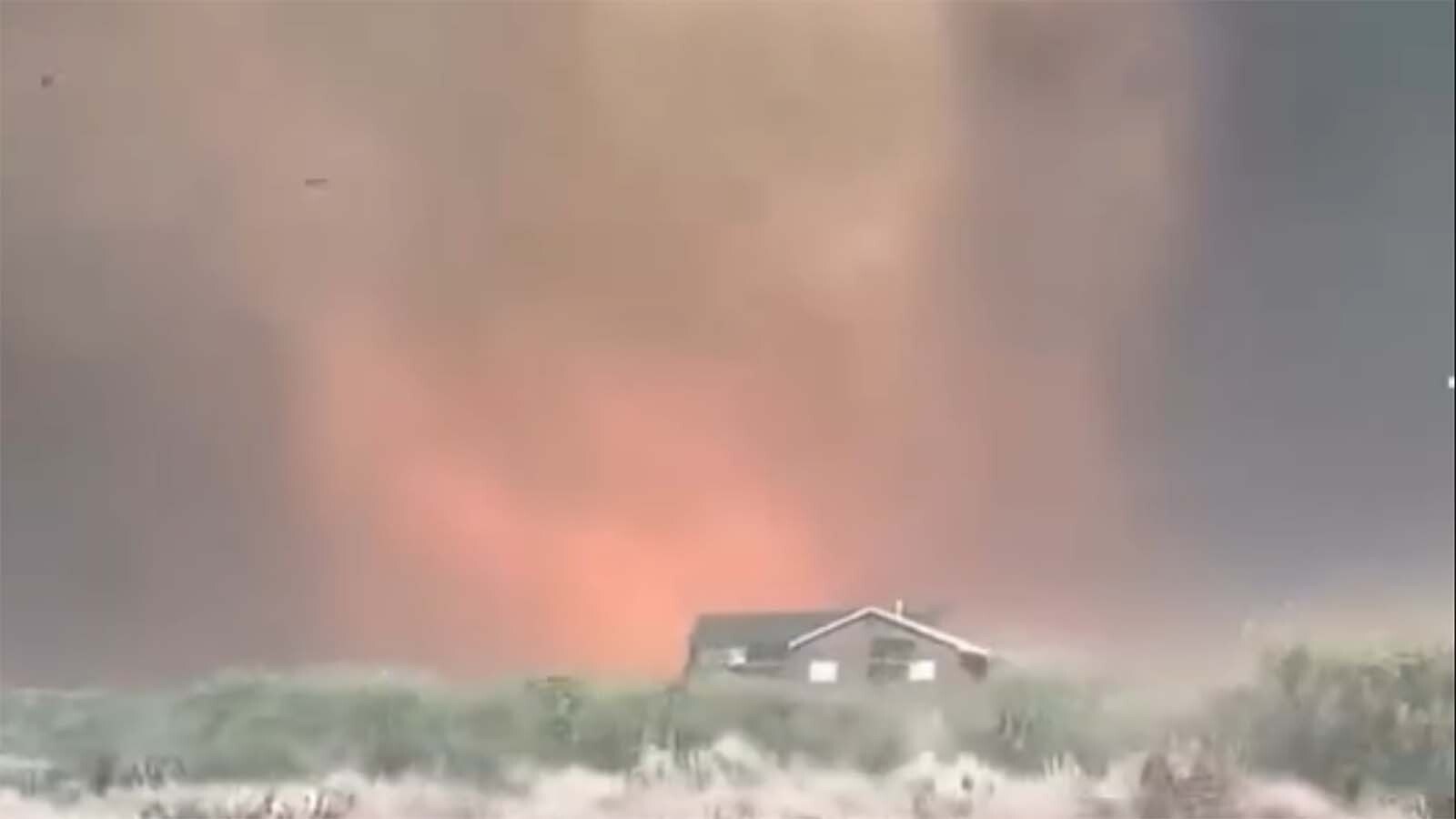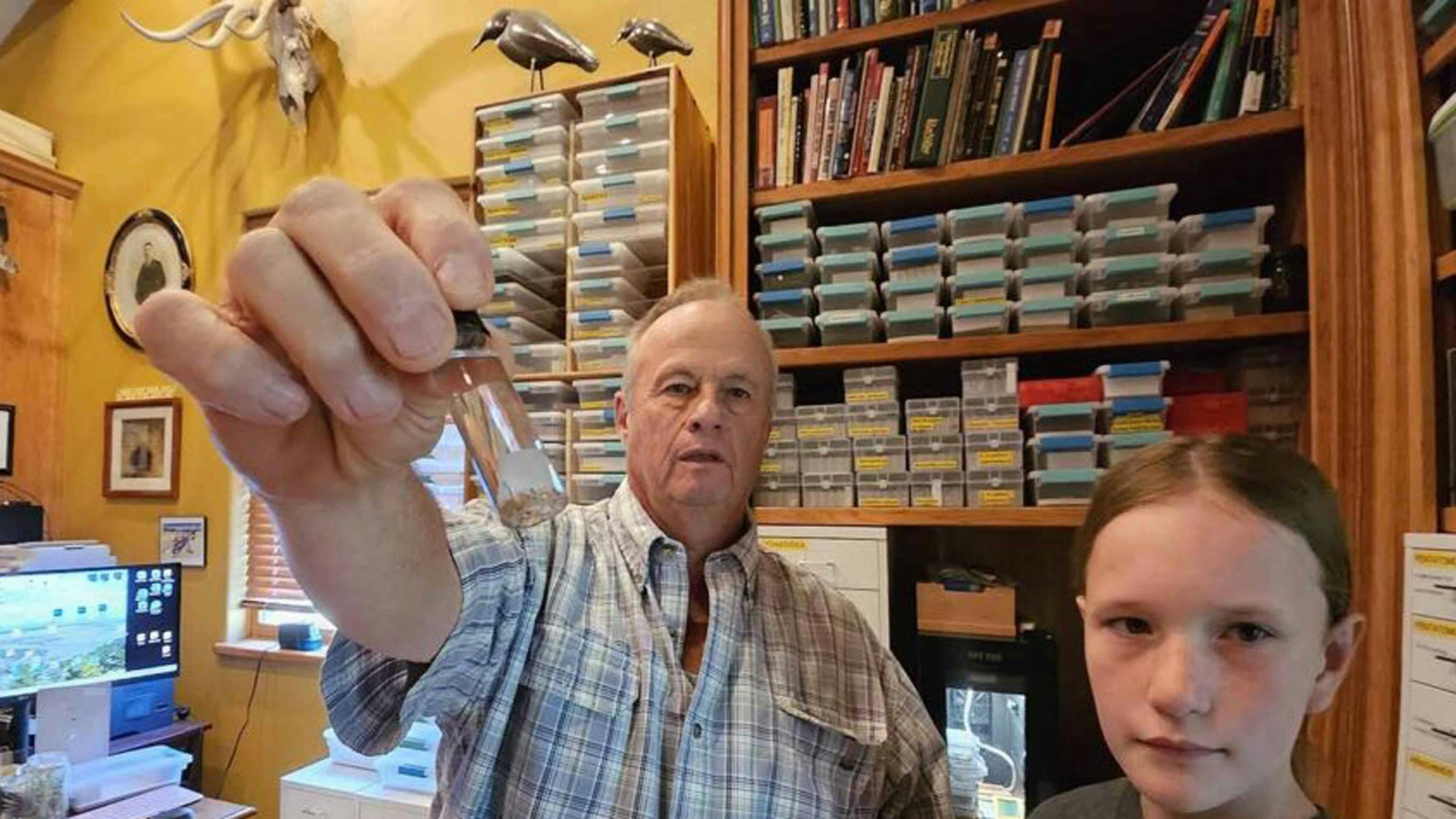More than 300 firefighters are fighting the Deer Creek Fire in southern Utah, which as of Monday has exploded to more than 10,000 acres and is 0% contained.
One of the most remarkable images from the raging wildfire is a swirling vortex of fire, smoke and wind.
The Hotshot Wake Up, a wildfire blog run by a former Hotshot overhead and crew supervisor, posted a video of the incident Saturday, calling it “the craziest ‘Firenado’ I’ve ever seen.”
The Utah Bureau of Land Management office also captured the phenomenon and posted it.
There’s no such thing as a “firenado,” but these vortexes are a very real and dangerous threat that often materialize during wildfires.
Terminology aside, nobody should underestimate the potential threat of these events, which can happen when conditions in a wildfire prompt it to make its own weather.
“It’s not a tornado moving into a wildfire,” said Cowboy State Daily meteorologist Don Day. “It’s not a fire strong enough to create a tornado, in terms of what a tornado actually is. Putting ‘-nado’ at the end of things isn’t the correct thing to do, but these things are dangerous.”
‘Fire Devils’
While there isn’t an official term for this phenomenon, Day suggested “fire devil” is an apt way to describe them. They’re created by the same atmospheric conditions that generate dust devils throughout the Western United States.
“What happens is the heat from the fire generates a lot of rising motion, because hot air has to lift,” he said. “There’s a natural spin motion in the atmosphere at all times that these tap into. When you combine that vertical motion of the heat and flame with the natural horizontal motion of the wind, you get a ‘fire devil.’”
What this phenomenon isn’t is a tornado of fire, or a tornado created by the conditions in a wildfire. Day said those are entirely different things that have nothing to do with each other.
“The conditions creating these fire devils are nothing remotely close to the mechanisms that create a tornado,” he said. “Let’s not go there.”
Nevertheless, the swirling column of fire, heat, and smoke acts like a chimney. Fire devils can quickly and easily make wildfires worse.
“These vertical motions draw air up, and when you draw air up, you're pulling oxygen into the fire, which makes it worse,” Day said. “If these pop up, it’s a very dangerous situation for firefighters, and there's nothing you're going to be able to do to mitigate them.”
Let It Be
Jerod DeLay, assistant state forester and fire management officer with the Wyoming State Forestry Division, said fire devils can happen frequently during wildfires.
That said, the one caught on video at the Deer Creek Fire was unlike anything he’s encountered.
“I haven’t seen anything as large as that,” he told Cowboy State Daily on Monday.
Fire devils can swirl into existence wherever a wildfire burns. DeLay said the best way to counter them is to avoid them while trusting in the strength of other defenses.
“You make sure you’re in a good, safe place and let it run its course,” he said. “After it dissipates, you just have to figure out where you are, pick up the pieces and keep moving forward.”
Contrary to public perception, firefighters who respond to wildfires aren’t battling flames. Their primary focus is trying to contain the fire by anticipating its movement, which means establishing fire lines.
If a fire devil appears, DeLay said he and other experienced firefighters would fall back to their fire lines. Either they’ll work or they won’t.
“You have to make sure to see if your lines held,” he said. “If they didn't, you make another plan to see where you can go. If they hold, you continue to strengthen and improve the lines that you already have.”
Beyond that, DeLay doesn’t see fire devils as anything extraordinary during a raging wildfire. While they can exacerbate conditions by spreading flaming debris, they’re a hazard that firefighters know to safely avoid.
“It adds another element that you probably weren't expecting,” he said.

Devils In The Details
It’s wildfire season across the Western U.S., as evidenced by the multiple wildfires burning in several states. With only two wildfires over 1,000 acres so far, it’s been a quiet season in Wyoming.
According to InciWeb, the Taylor Draw Fire near Rawlins burned more than 1,200 acres before it was 100% contained. The Horse Fire in Bridger-Teton National Forest west of Pinedale has burned 2,797 acres and is 70% contained.
“We've had some moments of increased activity, but nothing major,” DeLay said. “That’s what happens this time of year, depending on whether we catch the monsoons or we miss them and start picking up the lightning.”
There’s a lot of lightning in Wyoming’s extended forecast.
“We're going to see an increase in thunderstorms and lightning strikes in Wyoming over the next couple of weeks,” he said. “Thunderstorms can put a fire out, but you also get thunderstorms that produce lightning but not a lot of rain.
“That’s where you have problems, so we need to be highly vigilant of lightning-initiated fires, because the thunderstorms are going to increase.”
Thanks to the Cowboy State’s varied topography, it’s a natural wind tunnel. That means any lightning-strike fires can quickly spread and bring intense fire devils with them.
That, said Day, is “the double-edged sword” of increased thunderstorms in July and August. There’s a chance they’ll bring moisture to parched landscapes, but there’s an equal or greater chance that the only thing touching the ground is lightning.
“You finally get a chance of rain, but then you get to lightning with it,” he said. “We got through June and the first half of July mostly unscathed, but we’ve got to watch the next six weeks, because Wyoming’s going to go dry.”
Andrew Rossi can be reached at arossi@cowboystatedaily.com.





